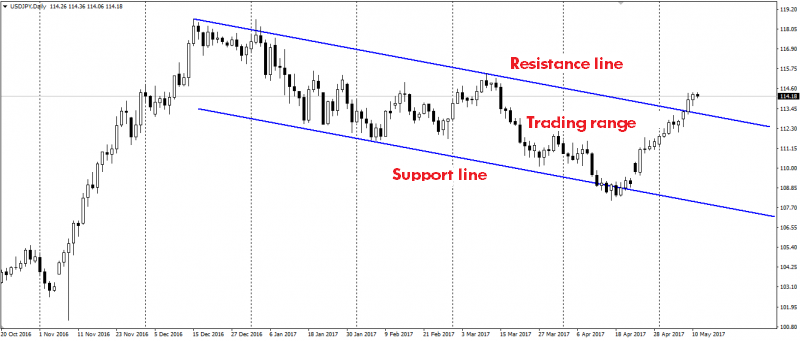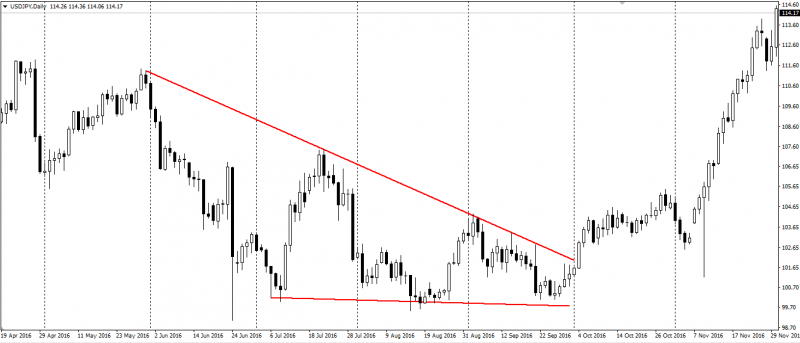
Some patterns for earnings in the financial markets. Part 3. Anton Hanzenko.
I described in detail previously the main patterns for making money in the financial market in a number of articles. You can take a look at Part 1 and Part 2. Today I want to finish this topic by adding some useful, but not common patterns. Of course, we can talk for a long time about trading patterns due to their diversity, educational conditions and efficiency, and I hope these articles will allow you to improve your earnings skills in the financial markets.
Let’s consider the popular patterns below.
Trading channel
A trading channel is not considered a trading formation or a pattern, but remains an integral part of the market and most of the trade figures. Trading channel – is a conditional corridor in which there are price fluctuations. The trade channel is divided into support and resistance lines, which correspond to the channel borders and the space inside the borders is the trading range.

The main trading strategy for trading in channel depends on the direction of the channel. For the ascending channel – buy at local low with closing positions at the highs. For the descending channel – sell at local high with closing positions at the low. For horizontal channels, where the trend is not traced, trading occurs at lower time intervals.
Separate trading strategies are trading to break through the trade channel, where the main difficulty is to recognize the false and true breakthrough. When trading on breaking through the trade channel, the channel borders, which were support / resistance, change the status to the opposite, and the channel itself is considered irrelevant.
Wedge
A wedge is a reversal pattern that looks like a triangle, but due to its significant inclination and proportions it is not a triangle. The wedge consists of two sloping lines of pending extremes, the ends of which tend to each other.

The main utility of the pattern is that when a wedge is formed, the probability of a trend reversal increases. The breakdown of the wedge occurs in the opposite direction of the pattern, which acts as a signal to enter the trade. There are no clear indications of wedge targets, but, as a rule, targets are set in the area where the wedge begins.
This is just a small part of trade patterns that are used in the world of technical analysis of financial markets. You can study all the patterns and not only more detailed on courses of training from the Ester Holding Inc.
Anton Hanzenko